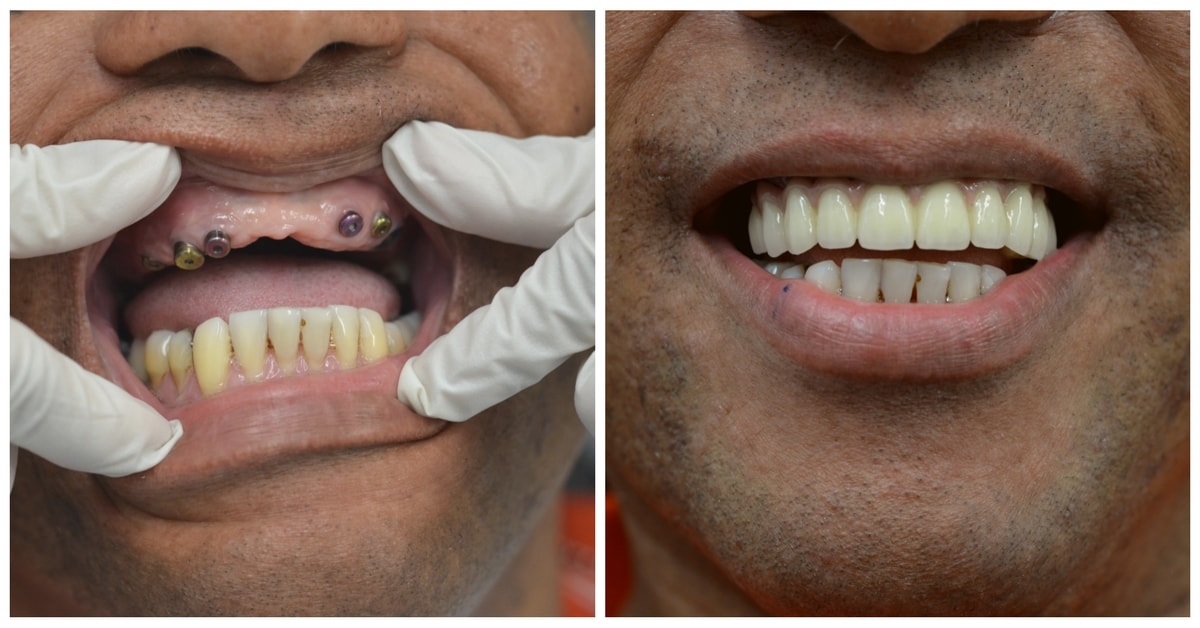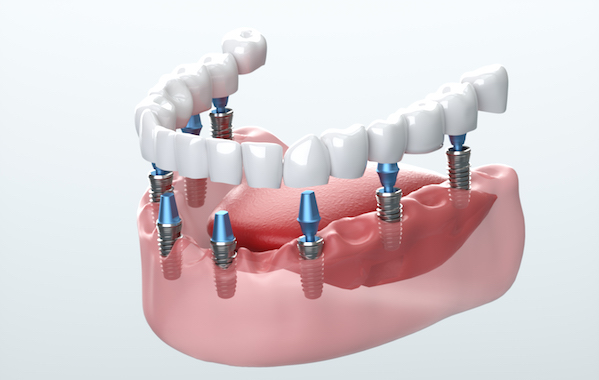Unknown Facts About Dental Implants
Table of ContentsHow Dental Implants can Save You Time, Stress, and Money.Facts About Dental Implants UncoveredThe 30-Second Trick For Dental ImplantsDental Implants Can Be Fun For Anyone
are medical tools surgically dental implanted into the jaw to recover a person's capacity to eat or their look. They supply assistance for artificial (phony) teeth, such as crowns, bridges, or dentures. When a tooth is lost due to injury or disease, an individual can experience problems such as fast bone loss, defective speech, or modifications to eating patterns that cause discomfort.
Structure of The Oral Implant System picking dental implants, talk to your oral provider about the possible benefits and threats, and whether you are a prospect for the treatment. Things to consider: Your total wellness is a crucial aspect in figuring out whether you are a great prospect for oral implants, the length of time it will require to heal, and the length of time the dental implant may remain in area.
Smoking cigarettes might impact the recovery procedure and decrease the lasting success of the dental implant. The healing process for the dental implant body may take a number of months or longer, during which time you usually have a short-term joint in location of the tooth. the oral implant treatment: Meticulously adhere to the oral hygiene directions provided to you by your oral copyright.
Not known Facts About Dental Implants
Implant failure can cause the demand for another procedure to deal with or change the implant system. Brings back the ability to chew Restores cosmetic look Assists keep the jawbone from diminishing as a result of bone loss Protects the health and wellness of the surrounding bone and periodontals Helps keep nearby (neighboring) teeth secure Enhances quality of life Damage to bordering all-natural teeth during implant placement Injury to the surrounding tissues during surgery, such as sinus opening Injury during surgery (for example, crack of surrounding jawbone) Inadequate feature, such as seeming like the teeth do not attack together normally A feeling that the tooth is loosened or turning in place resulting from an abutment screw loosening up Implant body failure (looseness of the implant body) because of systemic infection, which might be more probable in clients with unrestrained diabetes mellitus as a result of neighborhood infection in bone and periodontals supporting the implant body because of delayed healing, which may be most likely in patients that smoke Difficulty cleaning the gums around the dental implant, resulting in bad oral hygiene Untreated periodontal illness Post-surgical numbness as a result of nerve impingement or damage Always notify healthcare suppliers and imaging service technicians that more you have oral implants prior to any magnetic vibration imaging (MRI) or x-ray procedures.
FDA is not knowledgeable about any type of adverse events reported for MRI or x-ray treatments with dental implants. Oral implants systems are generally constructed from materials that comply with global consensus standards of the International Company for Standardization (ISO) or ASTM International. These criteria have details of what makes a safe material.
Other products such as gold alloys, cobalt-based alloys, titanium alloys, or ceramic materials are often made use of. The safety accounts of these products are well-known. Dental dental implant systems are assessed according to global agreement requirements. Biocompatibility screening, to show that physical call with the tool does not create complications like inflammation or sensitive response, becomes part of the assessment that assists guarantee the products in the dental implant system are risk-free and do not create damaging impacts when dental implanted in individuals.

The Single Strategy To Use For Dental Implants
Some individuals are not qualified for oral implant surgical treatment. It is for dental specialists to operate people with: intense illnessuncontrollable metabolic diseasebone or soft tissue disease or infectionIf these issues are resolved, an individual can have the surgical treatment. Dental Implants. In, oral doctors avoid operating people with: If people with any of the above undertake oral implant surgical procedure, there is a higher danger of the dental implant stopping working
Some people have click this site a jawbone abnormality that stops adequate bone for an implant from developing. In such cases, a doctor may require to do a ridge alteration. This entails raising the gum to subject the location of warped bone. The specialist will then utilize a bone or bone replacement to repair and develop the area.
Oral implant surgical treatment is a customized procedure. It's not the very same for everybody. However the adhering to gives a basic review of what you can expect your dentist, oral cosmetic surgeon, periodontist or prosthodontist to do: Position the dental implant operatively. Give you time to heal. Connect the article and last crown, bridge or denture.
Next off, your doctor will thoroughly put the dental implant right into your jaw. If your dental implant is near the front of your mouth, your dentist will certainly make a momentary tooth for you to wear up until you heal.
The Only Guide to Dental Implants
Your copyright can tell you what to anticipate in your scenario. Throughout the recovery phase, your jawbone ought to fuse to the oral check implant. This process, called osseointegration, is essential for security and lasting success. This procedure can take anywhere from 3 to nine months. In some situations, it may take longer.
When your dental implant heals, your dentist can affix the joint (small port blog post) and your final restoration (crown, bridge or denture). This generally takes regarding one hour to finish and might call for a second small surgical procedure. You shouldn't really feel any type of pain throughout your dental implant treatment due to the fact that your company will certainly make use of medicine to numb your gums.